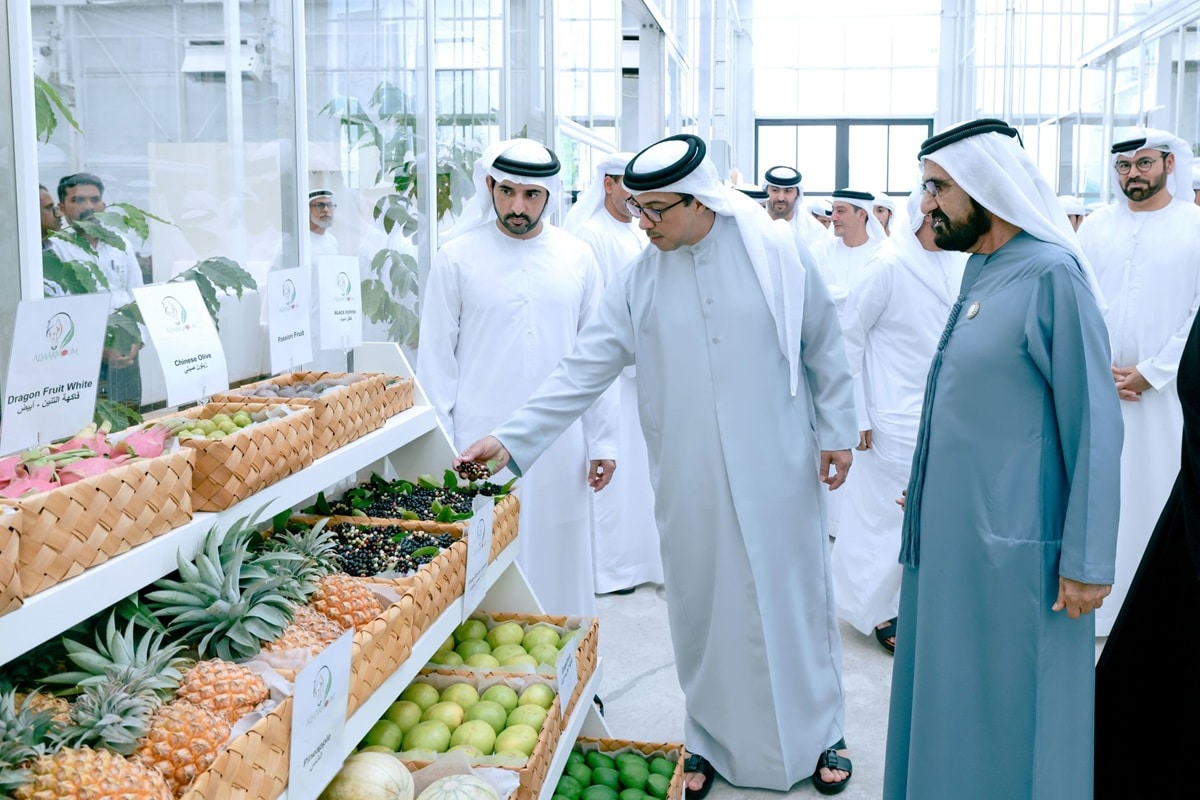The thing that surprises most people about the Agriculture industry in the UAE is the diverse nature of it. You have indoor vertical farms with climate-controlled environments, you’ve also got greenhouses, intensive dairy, and even fisheries production, so it can be said that the stereotype of associating the UAE with just a vast desert is no longer true. It truly is much more than that.
Sustainability and Water Use
There are major forces impacting this region’s agricultural production. The first and foremost is around sustainability and water use, so the drive to be more efficient with water is a massive force that is coming over the whole region. It goes without saying that this presents a huge opportunity for companies who work in that space to bring their expertise to the UAE, particularly around applying the right amount of water and reusing and recycling water.
The sweet spot between the UAE’s needs and the capabilities of the rest of the world lies around precision agriculture. In terms of precision agriculture, we are really talking about sensors and using variable rate applicators to apply inputs at the right times to the right places.
Opportunities for Technological Advancements in UAE Farms
In the UAE, you have high-tech facilities that are very advanced and low-tech farms as well that are not quite as future-forward, with barely any technology used in such farms, so there is a real opportunity to support these facilities.
On the robotics and automation side, the UAE relies on physical labor in the sector. So there is yet another opportunity for companies specializing in robotics and automation to reduce some of the labor burden present in the sector.
Entering the Market: Key Considerations
For whoever wants to enter the market, the first thing is to take your time and really understand the market. Then you have to find the right partner and make sure the technology you are offering is the right fit.
Testing Agritech Innovations in Real-World Conditions
The UAE also offers companies the opportunity to bring their technology here and trial them on actual crops in the real weather conditions. You would never know until you trial it first. This will allow one to benchmark and validate the technology. Think of it like a stamp of approval. It is really important for global agri companies to be here. You can’t just sign a deal and ship your machinery over. It is essential to see if it works or not.
Dubai’s Alignment with the UAE National Food Strategy
Dubai’s focus on food technology is aligned with the UAE National Food Strategy. The goals of this strategy enhance local food production, ensure year-round access to safe, nutritious, and sufficient food, develop policies to reduce food waste, and top the global food security index rankings by 2051.
The strategy includes 38 key initiatives that facilitate the global food trade and diversify food import sources. In line with the strategy, Dubai’s Food Tech Valley aims to triple the UAE’s food production. Food Tech Valley is set to use the latest agritech as well as host a food innovation center, a smart food logistics hub, and R&D facilities. The valley adds to the existing list of sustainable farming projects and centers in the city like the International Center for Biosaline Agriculture. The agricultural research space focuses on developing solutions for food and water security.
Dubai is already home to agritech companies focused on vertical and hydroponic farming. Desert Control, the Norwegian startup, is behind liquid nanoclay which when sprayed on sand boosts water retention and increases the fertility of sandy soil.
Bustanica: The World’s Largest Vertical Farm
The world’s largest vertical farm has recently opened in Dubai. The Bustanica facility is set over a 10,000-square-meter footprint, providing 31,000 square meters of operational and production area. The facility is designed to produce in excess of a million kilos a year. The facility will go to market with seven different cultivars: four lettuce and three non-lettuce varieties. In addition to airline products for onboard use, they will also push their product into the retail market, including supermarkets, in the very near future.
The largest indoor vertical farm fuses the basic principles of hydroponics and incorporates sustainability elements. By making it vertical, it achieves major efficiency in output. Most importantly, this allows the facility to control the quality of its products. The controlled environment agricultural setup enables Bustanica to produce the best quality products in terms of taste and nutrition. One of the other benefits is that their products are ready to eat from harvest. Being local, Bustanica ensures a very short time frame from harvest to consumer, providing the freshest possible product, which is a major unique feature.
Within the facility, they have 27 modular grow units, each capable of holding around 45,360 plants. Once it reaches full production, there will be approximately 1.1 million plants growing at any given time, at different life cycles. Multiple rooms help reduce contamination risk and offer flexibility in growing various cultivars. The initial focus is on seven cultivars, including four types of lettuce, spinach, kale, and arugula (rocket). The optimal climate allows for multiple harvests from each seed, which increases efficiency. Bustanica can turn over the rooms and start new batches of plants several times a year, further boosting efficiency compared to traditional farming practices.
One of the major advantages of this facility is its contribution to food security, a key goal for the UAE. Being part of EKFC (Emirates Flight Catering) is extremely important, as it can provide high-quality produce year-round, unrestricted by climate conditions. Health and safety standards are a top priority.
In terms of water sustainability, the facility uses 95% less water than traditional farming. It also captures and recycles plant perspiration through its treatment system, reusing it for the plants. This ensures that no water is wasted.
